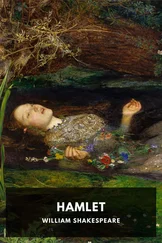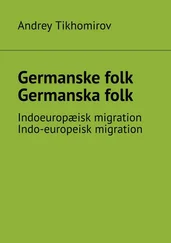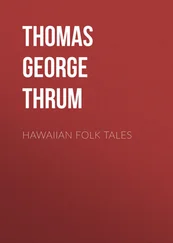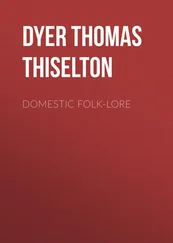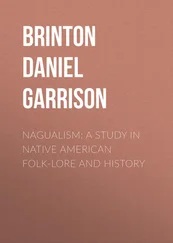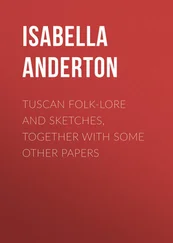Thomas Dyer - Folk-lore of Shakespeare
Здесь есть возможность читать онлайн «Thomas Dyer - Folk-lore of Shakespeare» — ознакомительный отрывок электронной книги совершенно бесплатно, а после прочтения отрывка купить полную версию. В некоторых случаях можно слушать аудио, скачать через торрент в формате fb2 и присутствует краткое содержание. Жанр: foreign_antique, foreign_prose, на английском языке. Описание произведения, (предисловие) а так же отзывы посетителей доступны на портале библиотеки ЛибКат.
- Название:Folk-lore of Shakespeare
- Автор:
- Жанр:
- Год:неизвестен
- ISBN:нет данных
- Рейтинг книги:4 / 5. Голосов: 1
-
Избранное:Добавить в избранное
- Отзывы:
-
Ваша оценка:
- 80
- 1
- 2
- 3
- 4
- 5
Folk-lore of Shakespeare: краткое содержание, описание и аннотация
Предлагаем к чтению аннотацию, описание, краткое содержание или предисловие (зависит от того, что написал сам автор книги «Folk-lore of Shakespeare»). Если вы не нашли необходимую информацию о книге — напишите в комментариях, мы постараемся отыскать её.
Folk-lore of Shakespeare — читать онлайн ознакомительный отрывок
Ниже представлен текст книги, разбитый по страницам. Система сохранения места последней прочитанной страницы, позволяет с удобством читать онлайн бесплатно книгу «Folk-lore of Shakespeare», без необходимости каждый раз заново искать на чём Вы остановились. Поставьте закладку, и сможете в любой момент перейти на страницу, на которой закончили чтение.
Интервал:
Закладка:
Wind. An immense deal of curious weather-lore 147 147 See Swainson’s “Weather-Lore.”
has been associated with the wind from the earliest period; and in our own and foreign countries innumerable proverbs are found describing the future state of the weather from the position of the wind, for, according to an old saying, “every wind has its weather.” Shakespeare has introduced some of these, showing how keen an observer he was of those every-day sayings which have always been much in use, especially among the lower classes. Thus the proverbial wet which accompanies the wind when in the south is mentioned in “As You Like It” (iii. 5):
“Like foggy south, puffing with wind and rain.”
And again, in “1 Henry IV.” (v. 1):
“The southern wind
Doth play the trumpet to his [ i. e. , the sun’s] purposes;
And by his hollow whistling in the leaves
Foretells a tempest, and a blustering day.”
A popular saying to the same effect, still in use, tells us that:
“When the wind is in the south,
It is in the rain’s mouth.”
Again, in days gone by, the southerly winds were generally supposed to be bearers of noxious fogs and vapors, frequent allusions to which are given by Shakespeare. Thus, in “The Tempest” (i. 2), Caliban says:
“a south-west blow on ye
And blister you all o’er.”
A book, 148 148 Batman upon Bartholomæus – “De Proprietatibus Rerum,” lib. xi. c. 3.
too, with which, as already noticed, Shakespeare appears to have been familiar, tells us, “This southern wind is hot and moist. Southern winds corrupt and destroy; they heat, and make men fall into the sickness.” Hence, in “Troilus and Cressida” (v. 1), Thersites speaks of “the rotten diseases of the south;” and in “Coriolanus” (i. 4), Marcius exclaims:
“All the contagion of the south light on you.”
Once more, in “Cymbeline” (ii. 3), Cloten speaks in the same strain: “The south fog rot him.”
Flaws. These are sudden gusts of wind. It was the opinion, says Warburton, “of some philosophers that the vapors being congealed in the air by cold (which is the most intense in the morning), and being afterwards rarefied and let loose by the warmth of the sun, occasion those sudden and impetuous gusts of wind which were called ‘flaws.’” Thus he comments on the following passage in “2 Henry IV.” (iv. 4):
“As humorous as winter, and as sudden
As flaws congealed in the spring of day.”
In “2 Henry VI.” (iii. 1) these outbursts of wind are further alluded to:
“And this fell tempest shall not cease to rage
Until the golden circuit on my head,
Like to the glorious sun’s transparent beams,
Do calm the fury of this mad-bred flaw.”
Again, in “Venus and Adonis” (425), there is an additional reference:
“Like a red morn, that ever yet betoken’d
Wreck to the seaman, tempest to the field,
Sorrow to shepherds, woe unto the birds,
Gusts and foul flaws to herdmen and to herds.”
In the Cornish dialect a flaw signifies primitively a cut. 149 149 Polwhele’s “Cornish Vocabulary.”
But it is also there used in a secondary sense for those sudden or cutting gusts of wind. 150 150 Cf. “Macbeth,” iii. 4, “O, these flaws and starts.”
Squalls. There is a common notion that “the sudden storm lasts not three hours,” an idea referred to by John of Gaunt in “Richard II.” (ii. 1):
“Small showers last long, but sudden storms are short.”
Thus, in Norfolk, the peasantry say that “the faster the rain, the quicker the hold up,” which is only a difference in words from the popular adage, “after a storm comes a calm.”
Clouds. In days gone by, clouds floating before the wind, like a reek or vapor, were termed racking clouds. Hence in “3 Henry VI.” (ii. 1), Richard speaks of:
“Three glorious suns, each one a perfect sun;
Not separated with the racking clouds.”
This verb, though now obsolete, was formerly in common use; and in “King Edward III.,” 1596, we read:
“Like inconstant clouds,
That, rack’d upon the carriage of the winds,
Increase,” etc.
At the present day one may often hear the phrase, the rack of the weather, in our agricultural districts; many, too, of the items of weather-lore noticed by Shakespeare being still firmly credited by our peasantry.
CHAPTER VI
BIRDS
In the present chapter we have not only a striking proof of Shakespeare’s minute acquaintance with natural history, but of his remarkable versatility as a writer. While displaying a most extensive knowledge of ornithology, he has further illustrated his subject by alluding to those numerous legends, popular sayings, and superstitions which have, in this and other countries, clustered round the feathered race. Indeed, the following pages are alone sufficient to show, if it were necessary, how fully he appreciated every branch of antiquarian lore; and what a diligent student he must have been in the pursuit of that wide range of information, the possession of which has made him one of the most many-sided writers that the world has ever seen. The numerous incidental allusions, too, by Shakespeare, to the folk-lore of bygone days, while showing how deeply he must have read and gathered knowledge from every available source, serve as an additional proof of his retentive memory, and marvellous power of embellishing his ideas by the most apposite illustrations. Unfortunately, however, these have, hitherto, been frequently lost sight of through the reader’s unacquaintance with that extensive field of folk-lore which was so well known to the poet. For the sake of easy reference, the birds with which the present chapter deals are arranged alphabetically.
Barnacle-Goose. There was a curious notion, very prevalent in former times, that this bird ( Anser bernicla ) was generated from the barnacle ( Lepas anatifera ), a shell-fish, growing on a flexible stem, and adhering to loose timber, bottoms of ships, etc., a metamorphosis to which Shakespeare alludes in “The Tempest” (iv. 1), where he makes Caliban say:
“we shall lose our time,
And all be turn’d to barnacles.”
This vulgar error, no doubt, originated in mistaking the fleshy peduncle of the shell-fish for the neck of a goose, the shell for its head, and the tentacula for a tuft of feathers. These shell-fish, therefore, bearing, as seen out of the water, a resemblance to the goose’s neck, were ignorantly, and without investigation, confounded with geese themselves. In France, the barnacle-goose may be eaten on fast days, by virtue of this old belief in its fishy origin. 151 151 See Harland and Wilkinson’s “Lancashire Folk-Lore,” 1867, pp. 116-121; “Notes and Queries,” 1st series, vol. viii. p. 224; “Penny Cyclopædia,” vol. vii. p. 206, article “Cirripeda.”
Like other fictions this one had its variations, 152 152 Nares’s “Glossary,” 1872, vol. i. p. 56.
for sometime the barnacles were supposed to grow on trees, and thence to drop into the sea, and become geese, as in Drayton’s account of Furness (“Polyolb.” 1622, song 27, l. 1190). As early as the 12th century this idea 153 153 See Harting’s “Ornithology of Shakespeare,” 1871, pp. 246-257.
was promulgated by Giraldus Cambrensis in his “Topographia Hiberniæ.” Gerarde, who in the year 1597 published his “Herball, or Generall Historie of Plantes,” narrates the following: “There are found in the north parts of Scotland, and the isles adjacent called Orcades, certain trees, whereon do grow certain shell-fishes, of a white color, tending to russet, wherein are contained little living creatures; which shells in time of maturity do open, and out of them grow those little living things which, falling into the water, do become fowls, whom we call barnacles, in the north of England brant geese, and in Lancashire tree geese; but the others that do fall upon the land perish, and do come to nothing. Thus much of the writings of others, and also from the mouths of people of those parts, which may very well accord with truth. But what our eyes have seen and hands have touched, we shall declare. There is a small island in Lancashire called the Pile of Foulders, wherein are found the broken pieces of old ships, some whereof have been cast thither by shipwreck, and also the trunks or bodies, with the branches, of old rotten trees, cast up there likewise, whereon is found a certain spume or froth, that in time breedeth into certain shells, in shape like those of the mussel, but sharper pointed, and of a whitish color: wherein is contained a thing in form like a lace of silk, one end whereof is fastened unto the inside of the shell, even as the fish of oysters and mussels are. The other end is made fast unto the belly of a rude mass or lump, which in time cometh to the shape and form of a bird; when it is perfectly formed the shell gapeth open, and the first thing that appeareth is the foresaid lace or string; next come the legs of the bird hanging out, and as it groweth greater it openeth the shell by degrees, till at length it is all come forth and hangeth only by the bill. In short space after it cometh to full maturity, and falleth into the sea, where it gathereth feathers and groweth to a fowl, bigger than a mallard, and lesser than a goose; having black legs and bill, or beak, and feathers black and white, spotted in such a manner as is our magpie, which the people of Lancashire call by no other name than a tree goose.” An interesting cut of these birds so growing is given by Mr. Halliwell-Phillipps from a manuscript of the 14th century, who is of opinion that the barnacle mentioned by Caliban was the tree-goose. It is not to be supposed, however, that there were none who doubted this marvellous story, or who took steps to refute it. Belon, so long ago as 1551, says Mr. Harting, 154 154 “Ornithology of Shakespeare,” 1871, p. 252.
and others after him, treated it with ridicule, and a refutation may be found in Willughby’s “Ornithology,” which was edited by Ray in 1678. 155 155 See “Philosophical Transactions” for 1835; Darwin’s “Monograph of the Cirrhipedia,” published by the Ray Society; a paper by Sir J. Emerson Tennent in “Notes and Queries,” 1st series, vol. viii. p. 223; Brand’s “Popular Antiquities,” 1849, vol. iii. pp. 361, 362; Douce’s “Illustrations of Shakespeare,” 1839, p. 14.
This vulgar error is mentioned by many of the old writers. Thus Bishop Hall, in his “Virgidemiarum” (lib. iv. sat. 2), says:
Интервал:
Закладка:
Похожие книги на «Folk-lore of Shakespeare»
Представляем Вашему вниманию похожие книги на «Folk-lore of Shakespeare» списком для выбора. Мы отобрали схожую по названию и смыслу литературу в надежде предоставить читателям больше вариантов отыскать новые, интересные, ещё непрочитанные произведения.
Обсуждение, отзывы о книге «Folk-lore of Shakespeare» и просто собственные мнения читателей. Оставьте ваши комментарии, напишите, что Вы думаете о произведении, его смысле или главных героях. Укажите что конкретно понравилось, а что нет, и почему Вы так считаете.




